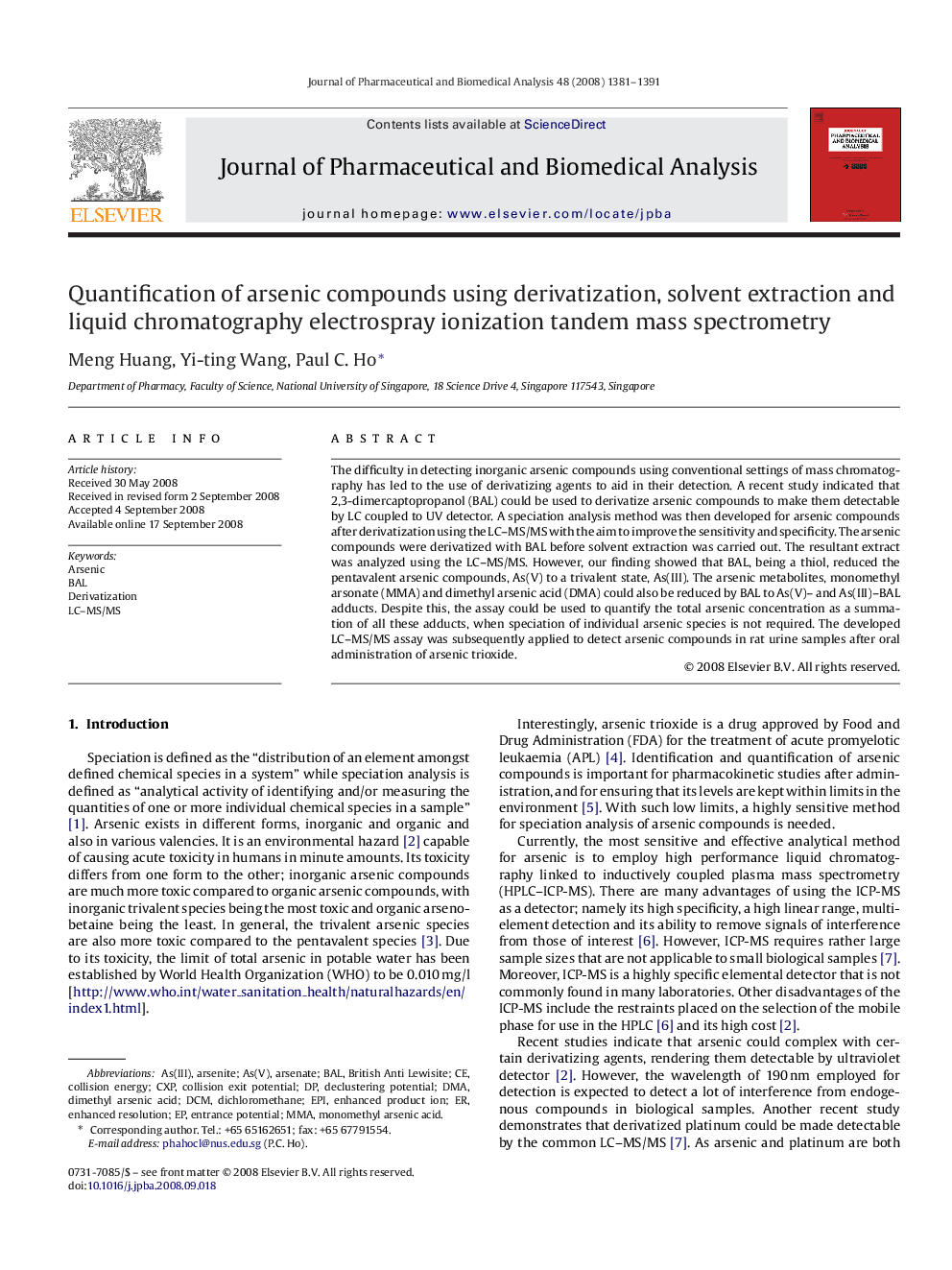| Article ID | Journal | Published Year | Pages | File Type |
|---|---|---|---|---|
| 1223833 | Journal of Pharmaceutical and Biomedical Analysis | 2008 | 11 Pages |
The difficulty in detecting inorganic arsenic compounds using conventional settings of mass chromatography has led to the use of derivatizing agents to aid in their detection. A recent study indicated that 2,3-dimercaptopropanol (BAL) could be used to derivatize arsenic compounds to make them detectable by LC coupled to UV detector. A speciation analysis method was then developed for arsenic compounds after derivatization using the LC–MS/MS with the aim to improve the sensitivity and specificity. The arsenic compounds were derivatized with BAL before solvent extraction was carried out. The resultant extract was analyzed using the LC–MS/MS. However, our finding showed that BAL, being a thiol, reduced the pentavalent arsenic compounds, As(V) to a trivalent state, As(III). The arsenic metabolites, monomethyl arsonate (MMA) and dimethyl arsenic acid (DMA) could also be reduced by BAL to As(V)– and As(III)–BAL adducts. Despite this, the assay could be used to quantify the total arsenic concentration as a summation of all these adducts, when speciation of individual arsenic species is not required. The developed LC–MS/MS assay was subsequently applied to detect arsenic compounds in rat urine samples after oral administration of arsenic trioxide.
